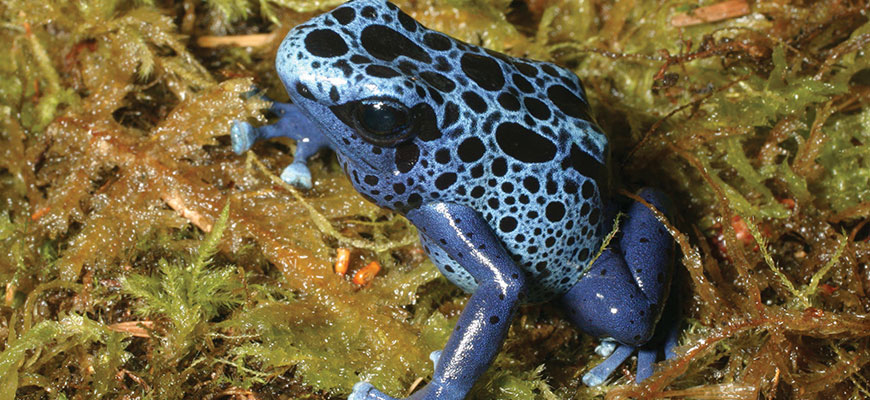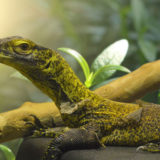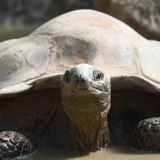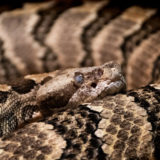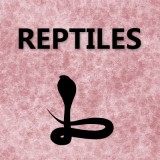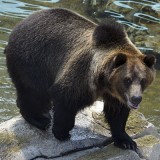This is a general description. Some characteristics will vary by species.
RANGE
Central and South America.
HABITAT
Tropical rain forests.
SIZE
½ – 2½ inches.
LIFE EXEPECTANCY
Wild: Unknown.
Captivity: Up to 25 years.
REPRODUCTION
- Breed continuously throughout the rainy season, some every other month or more frequently.
- Male will call to attract a female.
Eggs are laid in a jelly-like mass in a moist location (i.e. in leaf litter, under a rock or in a bromeliad). - Eggs are guarded by either parent or visited periodically and moistened.
- When tadpoles hatch, they scramble onto the back of the parent and hitch a ride to a suitable body of water (usually a stream or small pond).
- Tadpoles may be cannibalistic.
Some females will feed her tadpoles unfertilized eggs periodically.
DIET
Wild: Ants, termites, tiny beetles, and other small leaf litter arthropods.
Zoo: Small crickets, fruit flies, vitamin supplements, bean beetles
BEHAVIOR
- Diurnal.
- When threatened, poison is excreted through poison glands located throughout the frogs’ skin.
STATUS
Threatened due to destruction of habitat.
POINTS OF INTEREST
- Poison from only three species are toxic enough to produce effective blow gun darts: Phyllobates terribilis, P. aurotaenia and P. bicolor. These three are capable of killing a human.
- Toxins have a similar effect to curare (a plant poison), causing paralysis, convulsions and eventually, death.
- Long term wild caught captives and captive bred frogs lose or do not have their toxicity.
REFERENCES

